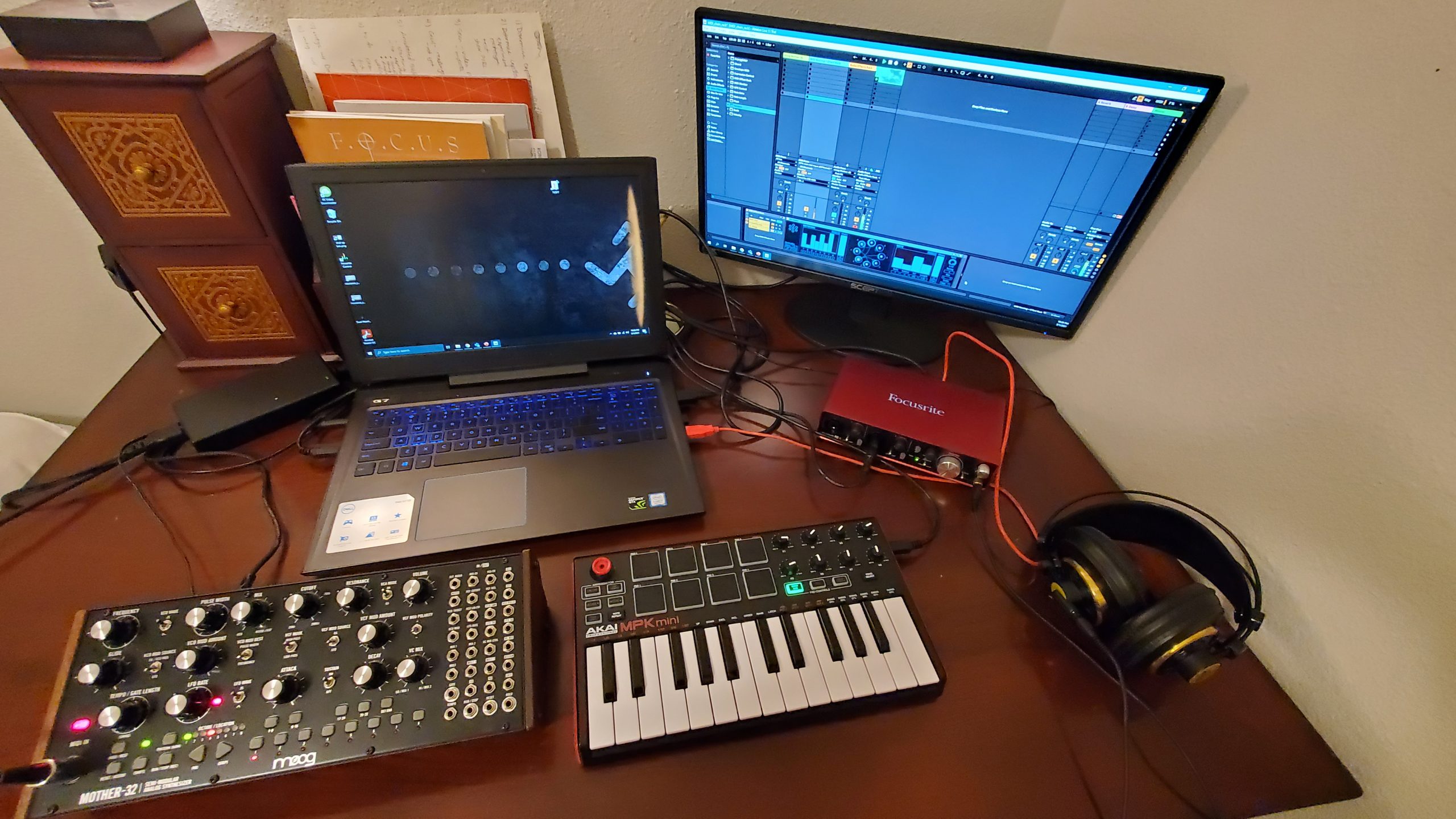ATEC Capstone – “Mood Swings”
Demo Video
Description
“Mood Swings” is a responsive soundscape that allows the listener to manipulate the mood of the piece by turning different dials. The foundation of the soundscape is composed of randomly generated tones run through a convolution reverb created from samples around the ATEC building. Turning the knobs will allow them to intensify or change different effects such as the randomness of notes, tempo, reverb, dullness or brightness, and resonance. While this project stands on its own, it is in conversation with “The Fish Project” begun by Dr. Heidi Rae Cooley. “The Fish Project” is an animated fish named Winsor McKoi suspended in a holographic display. Like a Tamagotchi, Winsor needs people to take care of him in order to stay alive and happy. To interact with him, a person performs different gestures with their hand in front of a leap motion controller. Using these gestures, one can feed him, clean his tank, or give him attention. All the aforementioned effects correspond to McKoi’s different states of being: Dirty, Starving, Happy, and Engaged. In future iterations, “Mood Swings” will be integrated with “The Fish Project” such that Winsor McKoi’s state of being affects the soundscape in the same way turning the knobs does now.
Throughout the process of this capstone, I learned how to do a lot of new things. I had never seen a synthesizer, never touched a MIDI controller, and never worked in Ableton Live. With the help of my capstone readers (David Marks, Sean Landers, Dale MacDonald, Heidi Rae Cooley), my SynthLab professor Dean Terry, and Hal Fitzgerald, I was able to figure out how to use these tools to create the “Mood Swings” soundscape.
More Documentation
This video demonstrates what my Ableton Live setup looks like. The sound being played is being randomly generated; I am not doing anything except manipulating just how chaotic it is using the “Dr. Chaos” MIDI effect. In the I/O section of each track, you can see how I set up the routing in order to send MIDI signals to the moog Mother-32. I had to create a track telling the MPK-mini to send its signals through the Scarlett, then the Scarlett sends them to the moog Mother-32.


